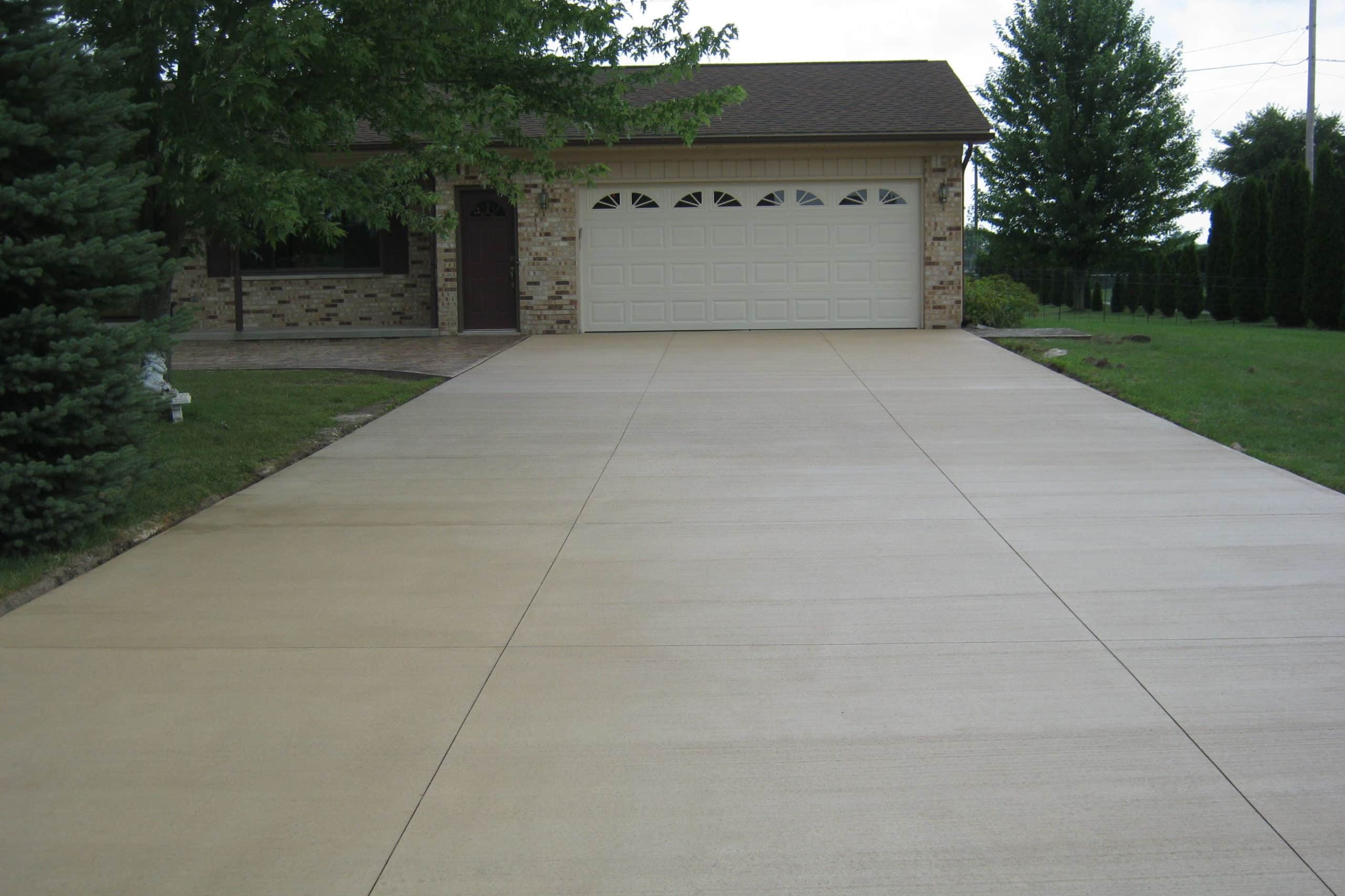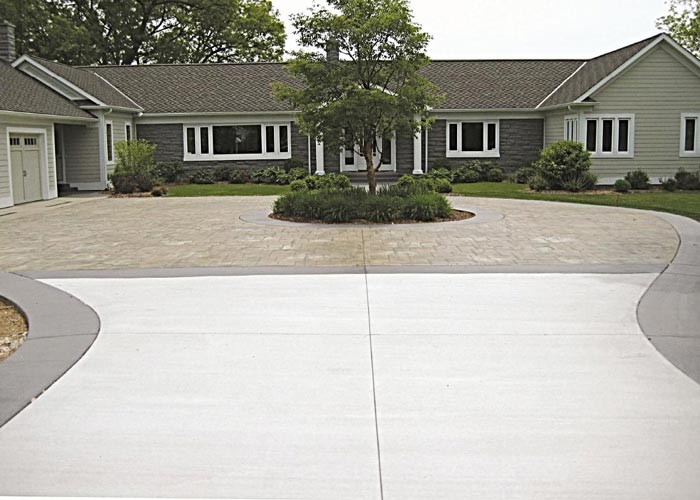Click Here for Exclusive Insights to Boost Your Concrete Undertakings
Wiki Article
The Environmentally Friendly Selection: Concrete Sidewalks for Your Area
Concrete pathways are an ubiquitous feature in many communities, yet their effect on the environment is typically ignored. Nonetheless, choosing concrete for your community walkways can make a substantial distinction in regards to sustainability and eco-friendliness. The benefits of opting for concrete surpass simple aesthetic appeals and capability. By taking into consideration the ecological benefits and long-lasting impacts on the neighborhood, the choice of products for sidewalks comes to be an essential choice. Allow's explore why concrete walkways could be the eco-friendly option your neighborhood needs.Advantages of Concrete Sidewalks
When taking into consideration the installation of sidewalks in a community, the benefits of selecting concrete over various other materials are substantial and various. Concrete pathways use sturdiness, enduring hefty foot website traffic, weather variations, and ecological components better than alternate materials like asphalt or crushed rock.
Sturdiness and Longevity
Exactly how can concrete sidewalks outmatch other products in terms of toughness and longevity? Concrete walkways are renowned for their remarkable longevity and durability contrasted to alternative materials like asphalt or pavers. The inherent stamina of concrete makes it very resistant to fracturing, shifting, and general damage triggered by foot website traffic, weather condition variations, and other ecological elements. Unlike asphalt, which can soften in high temperature levels and crack in cold problems, concrete preserves its architectural stability, requiring very little maintenance with time.Concrete sidewalks likewise have a longer life-span than pavers, which are susceptible to irregular settling, weed growth between joints, and private paver activity. The strong, constant surface area of concrete minimizes tripping dangers and ensures a smooth walking course for pedestrians. Additionally, concrete's sturdiness minimizes the need for regular fixings or replacements, making it a sustainable and cost-efficient choice for neighborhood walkways. By spending in concrete sidewalks, neighborhoods can take pleasure in a lasting and reputable facilities that improves the overall aesthetic allure and capability of the location.
Reduced Maintenance Demands
Concrete walkways attract attention for their marginal upkeep demands as a result of their long lasting nature and resilient performance. Unlike alternative products that may call for constant repair work or replacements, concrete pathways supply a cost-effective remedy that requires little upkeep over time. One of the key benefits of concrete walkways is their resistance to weathering and disintegration. This indicates they can withstand severe climate condition, hefty foot website traffic, and other ecological factors without degrading promptly.Regular maintenance check out this site for concrete walkways usually entails basic jobs such as regular cleansing to get rid of particles and periodic securing to protect the surface. In comparison to materials like asphalt or pavers that may move, fracture, or break down even more conveniently, concrete pathways keep their architectural integrity with minimal intervention. Additionally, any type of repair work that might be required are generally local and can be addressed quickly, decreasing both the moment and price connected with maintenance.

Ecological Advantages
With a concentrate on sustainability and eco-friendliness, concrete pathways supply notable environmental benefits that add to a greener neighborhood infrastructure. Concrete is a product understood for its longevity and longevity, decreasing the need for frequent replacements. This durability lessens the ecological effect additional reading related to the manufacturing and transportation of brand-new products for walkway building and construction. In addition, concrete walkways have a high solar reflectance index, meaning they show a substantial quantity of sunshine instead of soaking up and preserving warm. This top quality aids reduce the metropolitan warm island result, decreasing energy usage for cooling buildings and boosting overall convenience in metropolitan locations.Additionally, concrete is a permeable material that permits water to infiltrate right into the ground, lowering stormwater overflow and aiding in groundwater recharge. This helps stop erosion, minimize flooding, and keep the all-natural balance of water supply in the area. By selecting concrete pathways, communities can make a sustainable selection that favorably impacts the setting and enhances the lifestyle for locals.
Enhancing Neighborhood Sustainability
By focusing on sustainable framework remedies, neighborhoods can grow an unified balance between ecological consciousness and neighborhood growth. Enhancing community sustainability involves a complex approach that surpasses simply the ecological advantages of concrete sidewalks. Carrying out green areas, advertising energy-efficient techniques, and fostering a sense of neighborhood interaction are crucial parts of developing a sustainable area.One way to boost area sustainability is via the integration of permeable concrete pathways. These pathways allow rainwater to leak right into the ground, lowering stormwater runoff and minimizing the stress on community water drainage systems. Click Here. By including permeable walkways, areas can boost water high quality, lower flooding dangers, and boost total ecological Full Article durability
Furthermore, advertising alternate transport techniques such as walking and biking can substantially reduce carbon exhausts and promote a much healthier way of life amongst citizens. Creating secure pedestrian pathways, bike lanes, and designated greenways can motivate residents to count less on vehicles, better adding to the neighborhood's sustainability objectives.
Conclusion
In verdict, concrete walkways supply various advantages for neighborhoods, consisting of sturdiness, low maintenance needs, and environmental benefits. By choosing concrete walkways, communities can improve their sustainability and add to a more eco-friendly atmosphere. It is clear that concrete pathways are the suitable choice for areas wanting to boost their infrastructure in a eco friendly and resilient fashion.When taking into consideration the installation of sidewalks in an area, the benefits of picking concrete over other materials are various and significant. In addition, concrete's toughness decreases the demand for regular repairs or substitutes, making it a cost-efficient and sustainable option for area sidewalks (Legendary Concrete Brentwood).With a focus on sustainability and eco-friendliness, concrete walkways supply notable environmental advantages that add to a greener neighborhood facilities. Enhancing area sustainability involves a diverse technique that goes past just the environmental advantages of concrete pathways.In final thought, concrete pathways provide many advantages for areas, consisting of resilience, low maintenance demands, and environmental benefits
Report this wiki page